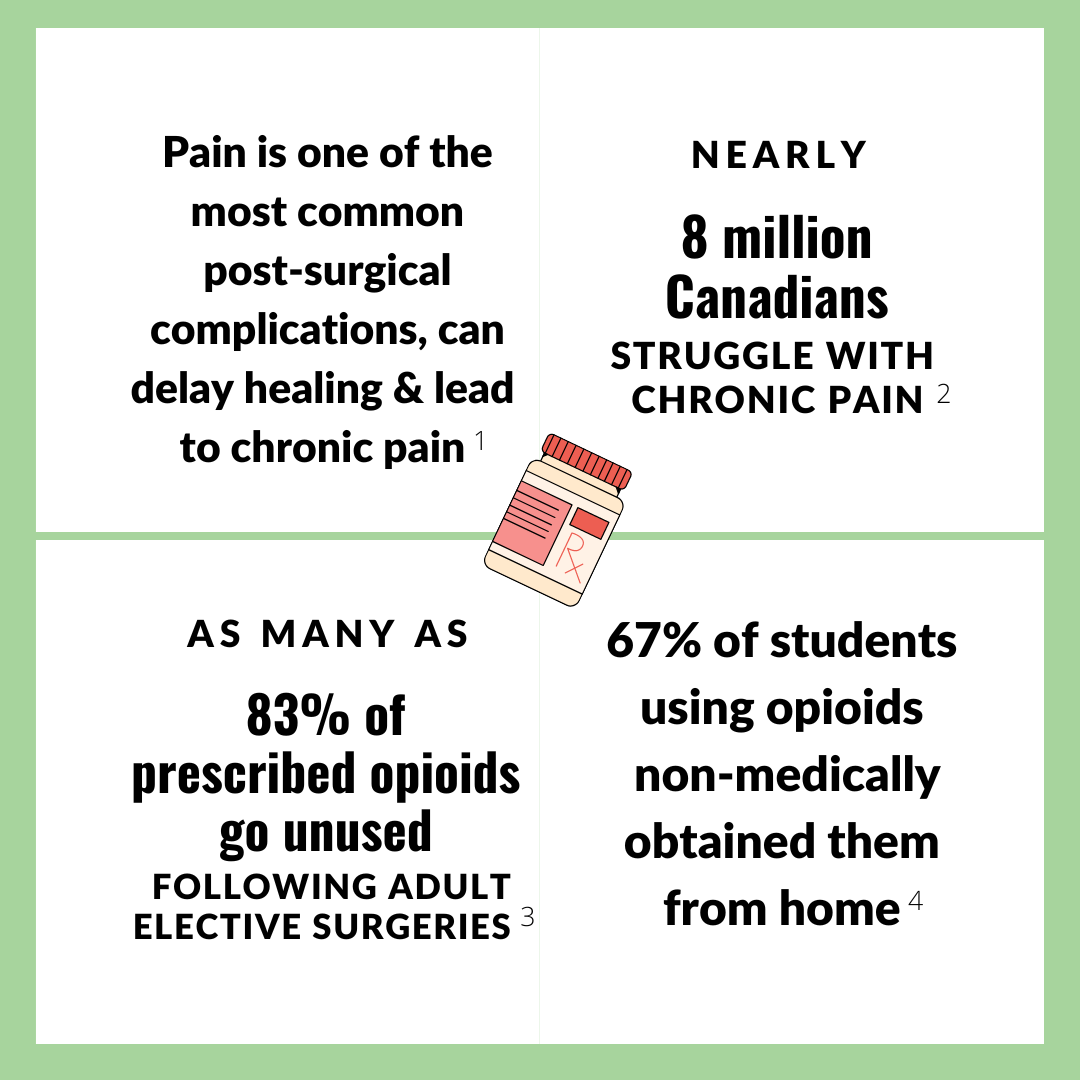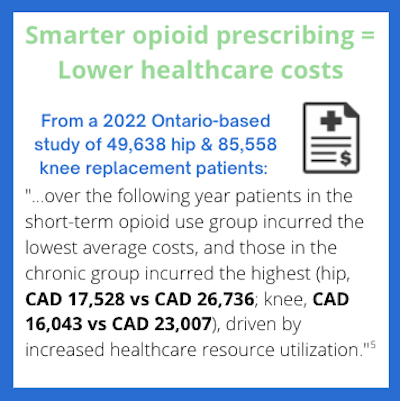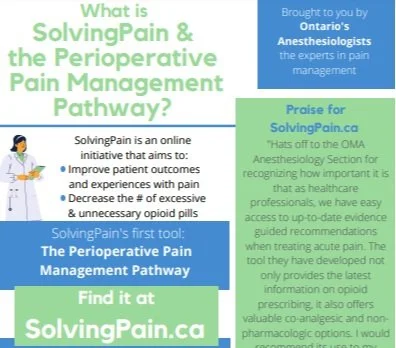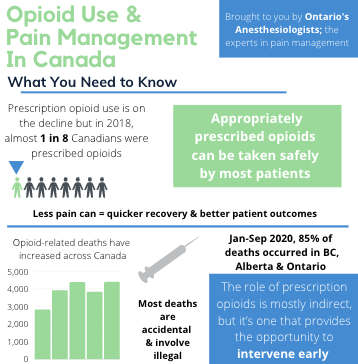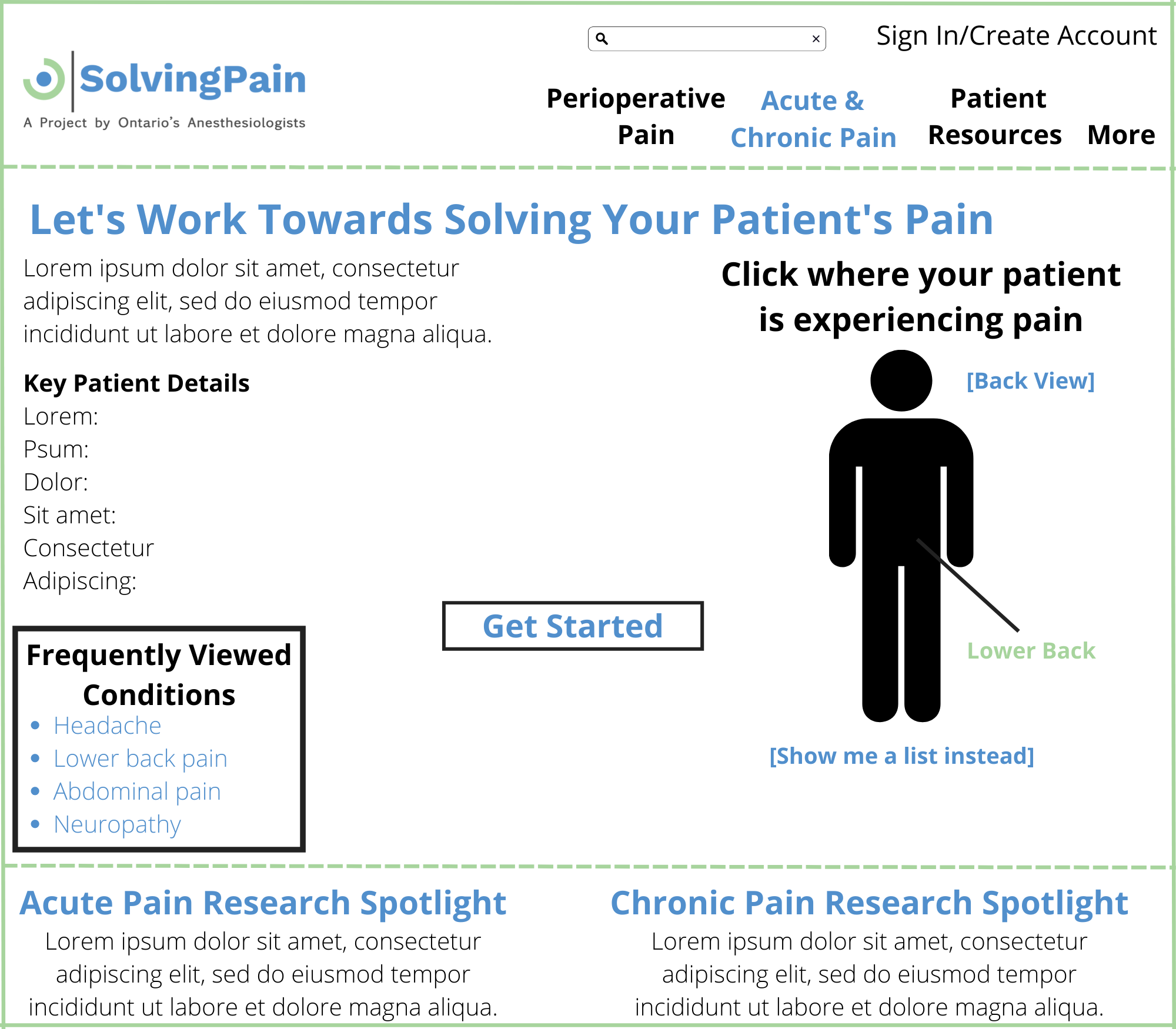
Help Grow SolvingPain
With funding, SolvingPain can make a meaningful impact on the lives of Canadians and our healthcare system!
Our Vision for SolvingPain
“No one wants to suffer pain. No one wants unsafe or ineffective pain treatments. But with so many recommendations out there, how can healthcare professionals stay up-to-date?” This is a question that Dr. David Neilipovitz, anesthesiologist, head of Critical Care at The Ottawa Hospital, and one of SolvingPain’s lead physicians, has long pondered.
It’s also a question that has been on many other physicians’ mind, including Dr. Collin Clarke, an anesthesiologist with the Western University Pain Management Clinic and SolvingPain’s other lead physician, “Most of us work in healthcare so that we can help others. However, knowing what the right thing to do for patients can be challenging, particularly in the rapidly changing landscape of managing perioperative pain.”
In 2019, Ontario’s Anesthesiologists, a section of the Ontario Medical Association, decided to answer that question with SolvingPain. Neilipovitz explains that the initiative, “aims to become the one-stop for pain management. The goal is to provide health professionals evidence-based, dynamic all-encompassing recommendations for people experiencing pain.”
He notes that, “Pain management can be complex requiring unique strategies and alternative therapies depending on a people’s unique characteristics,” To address this, the SolvingPain team wants to create a website and app that allows lets healthcare professionals quickly and easily adjust pain management strategies that address pain while also incorporating the patient’s specific health history.
We believe that with the right investment, SolvingPain can become a crucial resource that serves two vital, interlinked goals: Improving pain management and fighting the opioid epidemic.
Clarke notes that, “There is a current rush to minimize opioid exposure in the post-operative period, which has some positives. However, fewer opioids should not be the singular goal, optimal pain management should be.”
To achieve this, Clarke explains that SolvingPain will, when appropriate, provide both evidence-based pharmacologic and non-pharmacologic best practices, including opioid discharge quantities, proven non-opioid medications and such non-pharmaceutical strategies as physiotherapy, automated cooling systems and heat.
Our vision for SolvingPain is a sophisticated, free digital tool that provides Canadian healthcare practitioners with the knowledge and resources they need to optimize care for both acute and chronic pain. In addition to best practices customized to their patients, our ideal version of SolvingPain also allows users to customize the tool to their preferences and even geographical area, allowing them to see, for example, local resources that they can recommend to their patients.
In short, “SolvingPain aims to improve pain management by making it simpler, more effective, and safer.”
It’s an ambitious project but one that with the right partners, could make a big difference in the lives of the millions of Canadians who experience pain every year.
How You Can Help
We’ll be blunt: We’re experts in pain management, not fundraisers or tech experts. To take SolvingPain to the next level, we need funding.
The team behind SolvingPain is eager to discuss funding/sponsorship possibilities with Canadian-based individuals or organizations that are looking to make a positive impact in the field of healthcare.
Alternatively, are you someone who can connect us to the appropriate people and organizations?
We’re also open to in-kind work. Are you, are do you know, a web design/development firm that would be interested in making their mark in the field of digital health?
If you answer “yes” to any of the above descriptions, please contact us!
Besides receiving the satisfaction of improving the health of Canadians, our partners will be clearly represented on all our projects and in our marketing materials. We are also happy to discuss other ways that our partners could be recognized for their contributions to SolvingPain’s development.
The Impact Your Funding Could Make
As the statistics on this page illustrate, Canada is in the midst of both a pain management and an opioid overdose crisis. Unfortunately, without some dramatic shifts in how we treat addiction as well as pain management, these crises are likely to only worsen.
Additionally, the COVID-19 pandemic has delayed tens of thousands of medical procedures, including surgeries. We cannot efficiently address this backlog without also optimizing pain management. SolvingPain aims to empower Canadian healthcare practitioners with the knowledge they need to do just that. By improving pain management, we believe we will see:
A reduction in pain-related hospital return visits and calls
A reduction in rates of chronic pain
An increase in patient satisfaction rates
An increase in the number of appropriate discharge opioid prescriptions, leading to:
A reduction in rates of opioid misuse and addiction initiated by a primary prescription (a rare, but real consequence)
A reduction in pill diversion and opioid misuse (a common first step in opioid addiction)
A reduction in healthcare spending, as demonstrated in this made-in-Ontario paper that was co-authored by three Ontario anesthesiologists
The impacts of COVID-19 are expected to felt by the healthcare system for years to come. By better addressing pain, and reducing opioid misuse, we free up valuable human and financial resources that will allow our healthcare system to function more efficiently.
A fully developed SolvingPain will be a digital resource that makes an important impact on both the Canadian healthcare system and its patients.
But to achieve that, we need your help!
Sources for this page’s graphic
Gan TJ. Poorly controlled postoperative pain: prevalence, consequences, and prevention. J Pain Res. 2017;10:2287–98.
Health Canada. Canadian Pain Task Force Report: October 2020 (Internet). (cited 2022 February). Available here.
Srikandarajah S, Feinberg AE, Chiu JC. Standardization of prescriptions to decrease excess opioids after appendectomy and cholecystectomy [Internet].Toronto: North York General Hospital; 2019 (cited 2021 June). Available here.
Youth and Prescription Painkillers. CAMH (Internet). (cited 2022 February). Available here.
Johnson A. Milne B. Jamali N. Pasquali M. Gilron I. Mann S. Moore K. Graves E, Parlow J. Chronic opioid use after joint replacement surgery in seniors is associated with increased healthcare utilization and costs: a historical cohort study. Can J Anaesth. 2022 Mar 22. Epub ahead of print.


